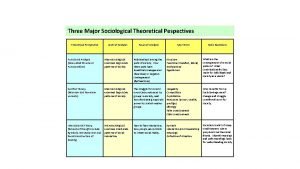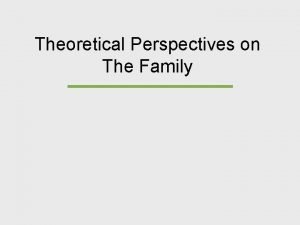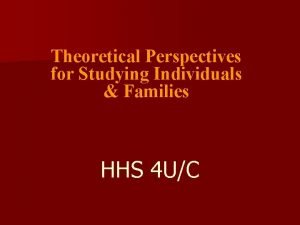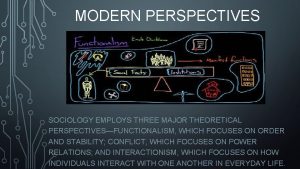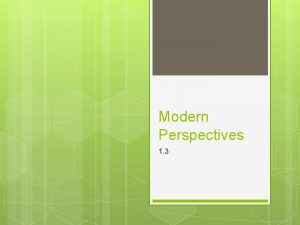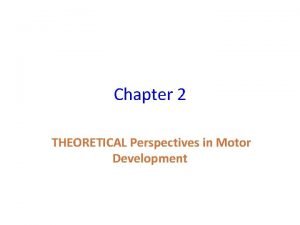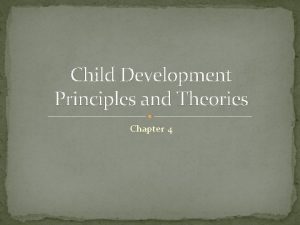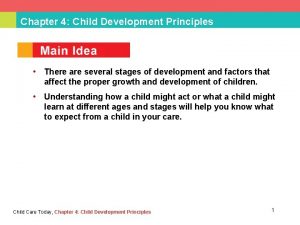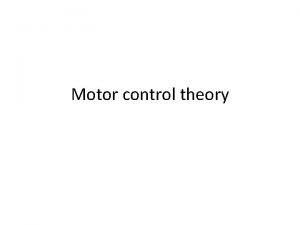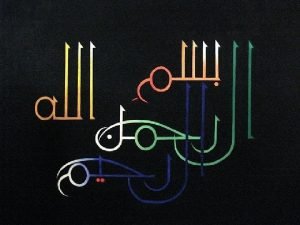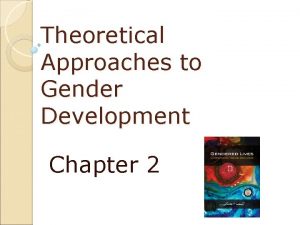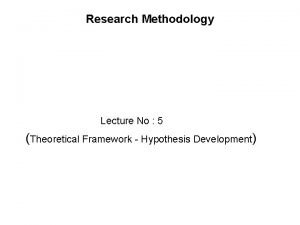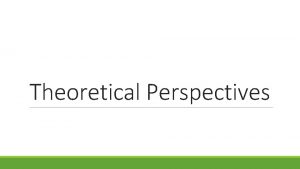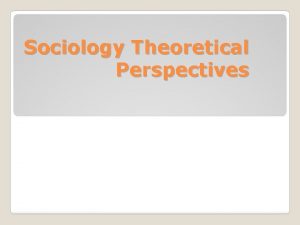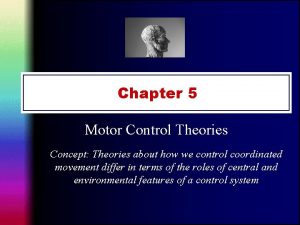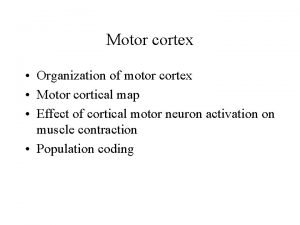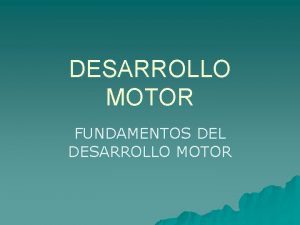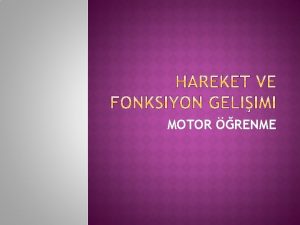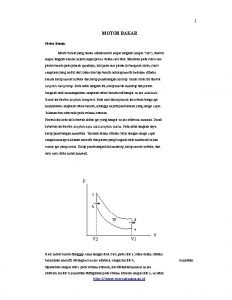Chapter 2 THEORETICAL Perspectives in Motor Development Theories











- Slides: 11

Chapter 2 THEORETICAL Perspectives in Motor Development

Theories of Motor Development and Motor Skills 1. Maturational Model/Theory 2. Information Processing Model/Theory 1. Ecological Theory/Model a. Dynamical Systems Perspective b. Perception/Action Perspective

Maturational Theory • Key Ideas-Genetics and Heredity are primarily responsible for motor learning and motor skill success. Environment plays a minor role. • Developmental change is a function of the maturation of the individual’s CNS. As CNS develops so does movement ability and skill. The environment may speed up or slow down this maturation but cannot change its biologically determined outcome. • Athletes are born, not made.

Information Processing Model • (1970 s) Brain as a computer that: 1. Takes in information 2. Processes it 3. Produces a movement output based on the above The better the individual is at taking in info, and processing it, the better the movement he/she will produce.

Key Concept for the Info Processing Model • Stimulus response bonds- formed by repetition, eventually with enough repetition the movement occurs w/o conscious thought. • Feedback- 2 types: 1. Knowledge of Results- missed long, short, no arc, off to the right. 1. Knowledge of Performance- didn’t follow through, no knee bend, wasn’t square, led with the bat not your wrist, etc.

Key Concept for the Info Processing Model • Aspects of performance dependent on: Attention, vigilance (focus over time), memory, sensory abilities (perceptual motor development), Better sensory info = better knowledge of results and knowledge of performance, and knowledge of body in space = better movement output.

Ecological Theory • 1980, Stresses the interrelationship between the individual, the environment, and the task. • Two Parts 1. Dynamical System (motor control & coordination interacts with the environment) 2. Perception/Action System

Dynamical System Cont’d (part of the Ecological Theory) • Movement based on the interaction of body structure and environment. • Body structure makes walking an easy movement but: • You can adapt to demands of changing and challenging environments (e. g. sand, uphill, ice, downhill) • The ability to adapt to changing environments for the same movement skill is termed “Spontaneous Self-Organization”

Dynamical System Cont’d (part of the Ecological Theory) • Body systems develop at different times and rates. • Development level can limit or constrain motor skill learning and development. • Individuals my only be able to walk when the slowest developing body system affecting that movement reaches a certain point of development. • This system limiting the development or performance of that movement is called a “rate limiter” • Examples: Leg strength in walking, core strength in sitting up, neck strength in hold the head up. • As one ages and loses strength or coordination due to disease or aging one loses function (i. e. motor skill ability due to the rate limiter”. E. G. loss of core strength decreases balance and increases falls in the elderly thus use of walkers for support to allow one to balance and be mobile.

Part II of the Dynamical Systems Theory- Perception/Action Perception is closely linked to movement but the environment must also be considered Related Terms: • Affordance- Function that an environmental object provides for an individual. e. g. Baseball bat affords an adult an opportunity to swing but it does not offer this opportunity to an infant. • Steps afford more movement opportunity as one matures from an infant (crawl up steps as infant, one at a time, walk, run, skip, jump as one matures) • Affordance changes as an individual matures and develops physically.

Part II of the Dynamical Systems Theory- Perception/Action • Terms Cont’d • Body Scaling: proportion of individual body size to the equipment, field, etc. • e. g. little league field, distance to mound and bases compared to a high school field. • Basketball court size, basket height for 5 year olds vs. college students. • Changing these scales can enhance motor learning and development or failure to do so can decrease learning and development. * • *Key Teaching Point
 Three major sociological perspectives
Three major sociological perspectives Theoretical perspectives on the family
Theoretical perspectives on the family Four theoretical perspectives
Four theoretical perspectives Three major theoretical perspectives in sociology
Three major theoretical perspectives in sociology Three theoretical perspectives
Three theoretical perspectives Dynamical systems theory motor development
Dynamical systems theory motor development Child development principles and theories
Child development principles and theories Child development principles and perspectives
Child development principles and perspectives Reflex theory
Reflex theory Theoretical framework and hypothesis development
Theoretical framework and hypothesis development Theoretical approaches to gender development
Theoretical approaches to gender development Theoretical framework and hypothesis development
Theoretical framework and hypothesis development
